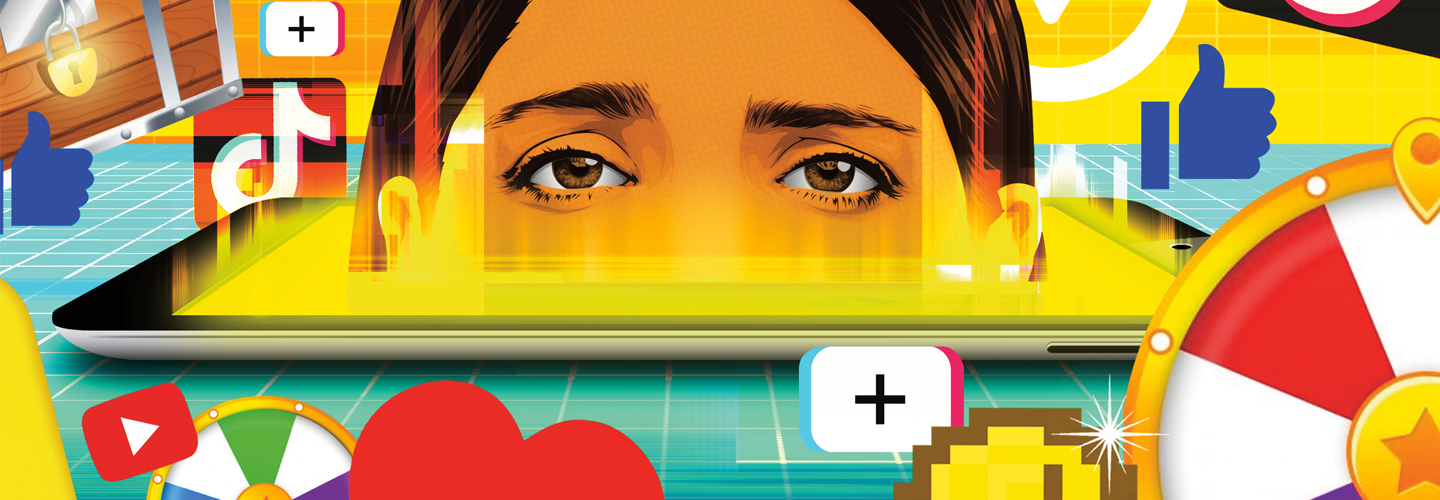Something had changed. Almost without noticing, Dhisha Kukalakuntla had stopped reading, listening to music, and hanging out with friends. Instead, the 18-year-old from Dallas, Texas, spent every free moment on her phone scanning social media feeds. Seeing a relatable TikTok video about growing up Indian American gave her a rush of happiness. And every time she “liked” a clip, her “For You” feed would fill with more videos just like it.
“It felt like a never-ending pot of gold,” says Kukalakuntla. A few minutes would quickly turn into hours, “until eventually my brain was too exhausted to accomplish anything I’d set out to do for the day,” she admits. Then regret would kick in, sending her back online to escape the feeling.
Sound familiar? According to experts, many tweens and teens are caught in a similar loop. Recreational screen time—including phone, computer, and TV use—among people ages 8 to 18 grew by 17 percent from 2019 to 2021, reports the nonprofit Common Sense Media. Average daily screen use is now 5 hours and 33 minutes for tweens and 8 hours and 39 minutes for teens.
Something had changed. Dhisha Kukalakuntla had stopped reading, listening to music, and hanging out with friends. But the 18-year-old from Dallas, Texas, had barely noticed. Instead, she was spending every free moment on her phone scanning social media feeds. Seeing a relatable TikTok video about growing up Indian American gave her a rush of happiness. She would “like” a clip. And every time she did, her “For You” feed would fill with more videos just like it.
“It felt like a never-ending pot of gold,” says Kukalakuntla. A few minutes would quickly turn into hours, “until eventually my brain was too exhausted to accomplish anything I’d set out to do for the day,” she admits. Then regret would kick in. That sent her back online to escape the feeling.
Sound familiar? According to experts, many tweens and teens are caught in a similar loop. Recreational screen time among people ages 8 to 18 grew by 17 percent from 2019 to 2021, reports the nonprofit Common Sense Media. That includes phone, computer, and TV use. Average daily screen use is now 5 hours and 33 minutes for tweens. It is 8 hours and 39 minutes for teens.

